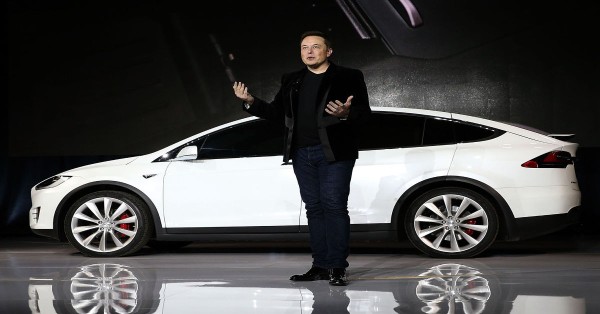Tesla's Vision: A Futuristic Autonomous Fleet
Elon Musk has revealed Tesla's highly anticipated Cybercab robotaxi and an innovative Robovan, signaling a major shift towards autonomous vehicles. The Cybercab, slated for production in 2026, is priced to be under $30,000, promising an affordable future for self-driving taxis. However, experts caution that while the vision is revolutionary, the road to fully operational robotaxis may take years, due to regulatory hurdles and safety concerns.
Tesla's Self-Driving Future: A New Era of Robotaxis
The unveiling of Tesla’s robotaxi, dubbed the Cybercab, took place at a spectacular event held at Warner Bros Studios near Los Angeles. The Cybercab features cutting-edge design with gull-wing doors, no steering wheel or pedals, and an emphasis on full autonomy. Musk’s vision is clear: a fleet of self-driving taxis, including a larger Robovan that can transport up to 20 passengers, marking a leap towards robotic vehicles as the next big thing in transportation.
With a price tag under $30,000, the Cybercab aims to revolutionize the taxi industry by making self-driving cars accessible to the masses. Musk also shared plans to allow Tesla owners to list their own vehicles as robotaxis via an app, creating a decentralized autonomous fleet. While this idea has gained attention, details about the app and its functionalities were absent during the presentation.
Safety and Reliability: Challenges Ahead for Robotaxis
Despite the ambitious promises, analysts and industry experts are wary of the obstacles Tesla faces in bringing robotaxis to the mainstream. Concerns about safety and regulatory approval dominate the conversation. Autonomous vehicles must be able to navigate complex situations, including inclement weather, traffic, and unpredictable pedestrian behavior. The technology is still evolving, and many argue that achieving full safety and reliability may take several years.
The robotaxi market has already seen setbacks from competitors like Alphabet’s Waymo, which has been in operation with its self-driving fleet but is still far from achieving widespread adoption. Zoox, owned by Amazon, and General Motors' Cruise have also faced challenges, with some even pausing their efforts on autonomous vehicles. Tesla’s approach, which eschews the use of lidar (a common component in other autonomous systems), further complicates its path forward. Musk remains optimistic, stating that Tesla's AI-powered system can deliver "10 times safer" driving than human drivers.
The Road to a Fully Autonomous Future
Musk has long championed the idea of robotaxis, with ambitious promises dating back to 2019, when he predicted operational robotaxis would be a reality by 2020. Though that timeline has not been met, Tesla is moving forward with its goal of achieving fully autonomous unsupervised driving by next year in select locations, including Texas and California. This will initially apply to Tesla’s Model 3 and Model Y, but Musk has yet to clarify if the Cybercab will also feature Tesla’s current Full Self-Driving (FSD) technology or an entirely new system.
At the event, Musk assured that the operating costs for the Cybercab would be extremely low, at just 20 cents per mile, with even cheaper costs for the Robovan at 5 cents per mile. The vehicles will utilize inductive charging, eliminating the need for traditional plug-in charging stations.
Tesla’s Strategic Shift: More Than Just an Automaker
The unveiling of the Cybercab and Robovan marks a significant shift in Tesla’s business strategy. Musk has increasingly positioned Tesla not just as an automaker, but as a leader in artificial intelligence and robotics. The push for autonomous vehicles comes at a time when Tesla's traditional electric vehicle sales have faced pressure. A more affordable, fully autonomous fleet could help revive interest in Tesla’s offerings, especially as competition in the electric vehicle market intensifies.
Despite the long road ahead, Musk remains steadfast in his belief that autonomy will redefine transportation, allowing people to reclaim their time and reduce accidents. “The autonomous future is here,” he declared at the event.
Challenges for Tesla’s Robotaxi Ambitions
Tesla’s foray into the robotaxi market comes at a time when several companies have already invested billions in self-driving technology, with mixed results. Although Waymo has managed to launch a limited robotaxi service, full-scale, uncrewed, fare-collecting robotaxis are still in their infancy. Musk’s optimistic outlook must contend with the realities of technology development, regulatory approval, and public acceptance.
Experts like Jessica Caldwell from Edmunds have praised Musk's idealistic vision of autonomous transportation, which promises to free up time and increase safety, but they also point out that many questions remain about how Tesla will achieve these goals from a practical standpoint.
As Tesla continues to navigate the complex landscape of autonomous technology, the unveiling of the Cybercab and Robovan showcases Musk’s commitment to transforming the transportation industry. However, whether Tesla can overcome the significant technical, regulatory, and market challenges remains to be seen.
What’s Next for Tesla’s Robotaxi Revolution?
With the Cybercab slated for 2026, the next few years will be pivotal in shaping the future of Tesla’s robotaxi plans. While Tesla has already made strides in autonomous technology, widespread adoption of fully autonomous vehicles may take longer than anticipated. Industry experts will be watching closely to see how Tesla navigates the challenges ahead and whether its bold vision of a robotaxi revolution becomes a reality.
Wishing you a safe and enjoyable journey ahead, from the NexNews Network.
